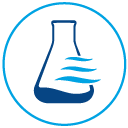
Where Does Stormwater Runoff Eventually End Up?
What Exactly is Stormwater Runoff?
Runoff stormwater is the precipitation (rain, hail, sleet and snow) that gravity pulls down roofs and across land surfaces (parking lots, roads, farms, fields and hills). A portion of these waters replenish groundwater sources as they percolate through the soil into aquifers, but water that cannot be absorbed runs off these surfaces and into sewers, retention ponds, streams and watersheds.
As these runoff waters flow over surfaces, they collect whatever is on them and pull the oils, fertilizers, chemicals, pollutants, trash and debris to all of these same places. This is what is known as stormwater runoff pollution and it has demanded increased regulations by federal, state and municipal authorities, to save waterways, aquatic life and resources from the devastating consequences of these pollutants.
Where Does Stormwater Runoff End Up?
Runoff stormwater moves swiftly into culverts, drainage ditches, sewers and retention ponds. From there this water flows untreated directly into local creeks and streams on into lakes, rivers, seas and, eventually, to the ocean. Although there are opportunities for debris, trash and some pollutants to settle out in retention ponds, lakes and other bodies of water where the stillness allows suspended solids to sink to the bottom, still many pollutants remain suspended in waterways from urban stormwater runoff until it reaches the ocean.
Is Stormwater Runoff Good or Bad?
In general the runoff water cycle is a naturally occurring event that is good for replenishing water supplies and sources. However, streets and highways accumulate oils, rubber, trash and other pollutants that get washed away with the stormwater. Fertilizers, pesticides and herbicides that have been applied to farmland soils and crops also get dissolved into stormwater. And livestock animals create large amounts of waste that gets picked up by stormwater. All of these pollutants get washed into local ponds, streams and rivers. As a result, large amounts of stormwater runoff pollution goes directly into our waterways. These pollutants have serious and long lasting deleterious effects on the health of our rivers, lakes, oceans, aquatic life and to human health.
Another problem caused by fast moving urban stormwater runoff is erosion. Banks of streams and rivers can be swept away by fast-moving stormwater that floods into the natural drainage systems. These normal flooding events during storms are magnified by water flowing off of impervious surfaces like roofs, paved roads, parking lots and driveways. This only increases the volume of runoff and the speed at which it rushes downstream and pulls away at whatever lies in its path.
This surface water runoff cycle cleans our roads, highways, roofs and buildings while filling our sewers, streams and lakes with debris, eroded soils and pollutants.
Stormwater Testing to Control Pollution
Many legal regulations and mitigation measures have been put into place to limit surface water runoff cycle pollution in recent decades. Planting trees and other vegetation in wetland areas, limiting impervious surfaces, monitoring stormwater runoff, stormwater retention areas and other important measures are becoming required for new construction and for existing businesses with large parking lots and roof areas.
However, the efforts do not stop there. Many new regulations for frequent stormwater testing have been put in place by local and state governments. These measures vary from place to place but they all require high impact areas to regularly test their stormwater runoff for potential pollutants. These pollutants could exist because of high levels of human activity and traffic or because your business uses, produces or sells a petroleum product or chemical that would pollute the environment.
These stormwater tests are required twice a year in California and will become much more prevalent in the coming years. California has a Stormwater Pollution Prevention Plan (SWPPP), which requires tests for:
- Total Suspended Solids (TSS)
- pH (in the field)
- Oil & Grease
Additional tests are determined by the category of the industry (SIC) and the contaminants most likely to be found in runoff from the location. All Dischargers are required to submit and certify all reports electronically via the Storm Water Multiple Application and Report Tracking System (SMARTS).
Conclusion
If you are in need of fulfilling stormwater testing obligations/requirements look no further than Torrent Laboratory. Torrent will provide you with complete analytical services to comply with all the requirements of NPDES programs, administered by California’s State Water Resources Quality Control Board for industrial stormwater, municipalities, construction activities and Caltrans. We have the most advanced testing capabilities available, the most experienced engineers, the fastest TAT’s and the best customer service in the industry.






